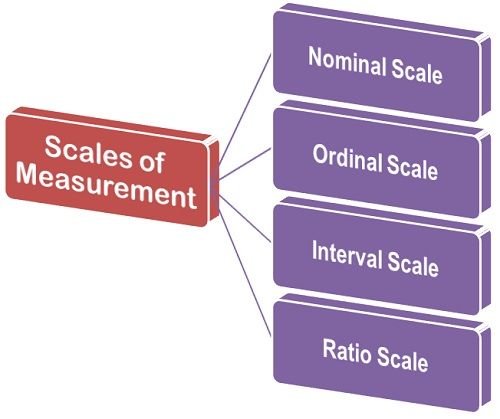Understanding Nominal Scale
The word ‘nominal’ means ‘existing in name only; not actual, or not real’. In research, nominal scale is used for classification and categorisation. In nominal scale, labels are added to classify a variable into different groups and categories. This scale is mostly used for qualitative variables for classification and categorisation. Labels assigned for categorisation or classification are only meant for identification and have no actual or real meaning. Thus, the given the name ‘nominal scale’.
This scale allows to classify, and group based on tags, labels, or values. Any label or numerical value assigned to a response is meaningless, arbitrary, and has not actual or inherent value.
Examples of Nominal Scale
A common example of nominal scale is gender of participants who participated in a survey.
What is your gender?
- Male
- Female
In this question, nominal scale is used to identify, classify, and group the gender of participants. The two group of participants will be ‘male participants’ and ‘female participants’.
Another example of nominal scale is the usage of smartphones by consumers for online shopping.
Do you use smartphone for online shopping?
- Yes
- No
In the above question, participants will be classified and grouped based on the usage of smartphones for online shopping. The two groups of customers will be ‘customers using smartphone for online shopping’ and ‘customers not using smartphones for online shopping’.
Nominal scale helps to classify in two, three, or more than three categories. The following example shows that classification of participants based on their duration of employment with the current employer.
For how long have you been working with the current employer?
- Less than a year
- 1 to 2 years
- 2 to 3 years
- More than 3 years
The nominal scale will help classify participants in four groups based on the duration of employment with the current employer.
Other examples of nominal scale include age, experience in an industry, income of participants, number of students enrolled in a programme, or number of students enrolled in a class etc.
Characteristics of Nominal Scale

- Nominal scale is only used for classification, grouping, and categorisation. It is not used for ranking like Ordinal scale, or measuring interval like Interval scale.
- Labels used in nominal scale have no values or actual meanings. For examples, when assigning labels to gender of participants where 1 relates to male participants and 2 relates to female participants, labels have no real meaning. It does not mean that males have a better rank than females, or male participants have a better position or weight in the survey. Labels are meaningless and only meant for identification. There is no order, ranking, or alphabetical arrangement in nominal scale.
- Nominal scale allows limited calculations and interpretation. For example, in case of gender, nominal scale can be used to examine the number of male and female participants, or the percentage of male and female participants. Count, percentage, and frequency distribution analysis are statistical techniques mostly used in nominal scale.
- Nominal scale is only used for qualitative variables. It cannot be used in case of quantitative variables. It can be used in variables like gender, age, education, and experience.
- Nominal scale is mostly used in Multiple Choice Questions or Dichotomous Questions. Dichotomous questions are closed-ended questions with two responses only. For example, do you own a smartphone. The answer to this question is ‘Yes’ or ‘No’.
References
Creswell, J. W. and Creswell, J. D. (2017) Research Design: Qualitative, Quantitative, and Mixed Methods Approaches. US: Sage Publishers.
Saunders, M., Lewis, P. and Thornhill, A. (2016) Research Methods for Business Students. Harlow: Pearson.



